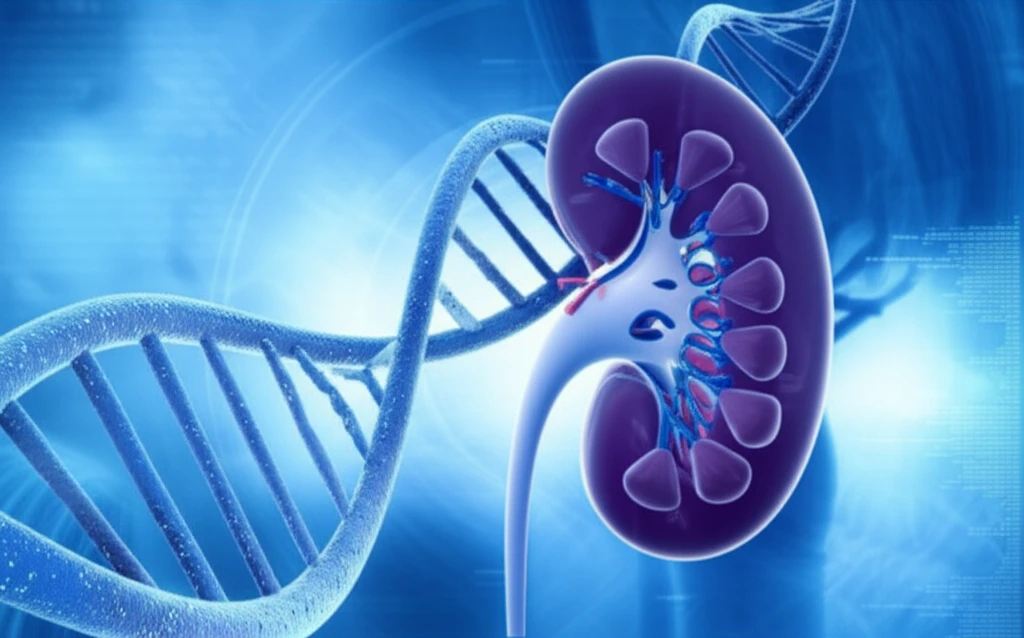
A Genetic Twist: Unraveling Polycystic Kidney Disease in a Chinese Family
"Scientists identify a novel gene mutation offering new insights into autosomal dominant polycystic kidney disease (ADPKD)."
Autosomal dominant polycystic kidney disease (ADPKD) is a common inherited disorder that affects approximately 1 in 400 to 1000 individuals. This condition is characterized by the development of numerous cysts in the kidneys, which can eventually lead to kidney failure. Understanding the genetic basis of ADPKD is crucial for improving diagnosis and potentially developing targeted therapies.
Two genes, PKD1 and PKD2, are primarily responsible for ADPKD. Mutations in PKD1 account for about 85% of cases, while PKD2 mutations are responsible for the remaining 15%. These genes produce proteins called polycystin-1 and polycystin-2, respectively, which play critical roles in maintaining the normal structure and function of kidney tubules.
Now, a recent study has uncovered a novel splicing mutation in the PKD1 gene within a Chinese family affected by ADPKD. This discovery not only expands our knowledge of the genetic landscape of ADPKD but also offers valuable insights into the mechanisms driving the disease.
Decoding the PKD1 Mutation: A Genetic Investigation

The study involved a detailed genetic analysis of a Chinese family with a history of ADPKD. Researchers extracted DNA samples from affected family members and performed targeted next-generation sequencing to analyze genes associated with kidney diseases. This approach allowed them to identify a specific mutation within the PKD1 gene.
- Next-Generation Sequencing: Employed to analyze renal disease-related genes.
- Splicing Mutation: Identified as c.2854-3C > G in the PKD1 gene.
- Family Specific: Present in affected individuals, absent in unaffected relatives and controls.
Implications and Future Directions
The discovery of the PKD1 c.2854-3C > G mutation provides new insights into the pathogenesis of ADPKD. This specific mutation leads to a frameshift during the translation of the polycystin-1 protein, ultimately resulting in a truncated, non-functional protein.
The truncated protein lacks essential domains required for proper cellular function, including signal transduction and regulation of gene transcription. This disruption contributes to abnormal kidney development and cyst formation, the hallmarks of ADPKD.
These findings have significant implications for the diagnosis and potential treatment of ADPKD. Identifying this novel mutation can improve genetic screening and counseling for families at risk. Further research is needed to explore the potential for targeted therapies that address the specific defects caused by this and other PKD1 mutations, offering hope for more effective interventions in the future.
